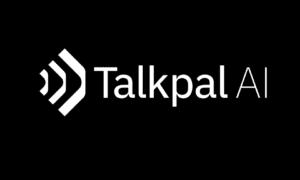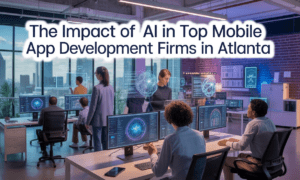Artificial intelligence isn’t just another technology trend. It’s fundamentally reshaping how businesses operate, compete, and create value. Yet most organizations are still treating AI like a shiny new tool rather than the strategic imperative it has become. This gap between perception and reality is creating unprecedented opportunities for those who understand how to leverage AI effectively.
The companies that thrive in the next decade won’t be those with the biggest budgets or the most resources. They’ll be the ones that recognize AI as a core business strategy, not an optional upgrade. Implementing AI across business functions can revolutionize your operations, improve efficiency, and position your organization for sustained growth in an increasingly digital marketplace.
Why Are Most Business Leaders Missing the Real Potential of AI?
There’s a fundamental disconnect happening right now. Business leaders know AI is important, yet most are stuck in pilot purgatory. They’re running small experiments with generative AI, testing chatbots for customer service, maybe using some predictive analytics for forecasting. But they’re missing the bigger picture. AI isn’t just about automating tasks or improving individual processes. It’s about reimagining your entire business model.
The problem starts with how organizations approach AI adoption. They treat it like they treated digital transformation a decade ago: as a technology project rather than a business strategy. This mindset leads to fragmented initiatives that never deliver real business value. You end up with pockets of innovation that don’t connect, data silos that prevent scaling, and leadership teams that can’t articulate why AI matters beyond buzzword compliance.
Here’s what successful AI strategy actually looks like: It begins with identifying specific business challenges where AI capabilities can create measurable impact. It requires building AI literacy across your workforce, not just in IT. Most importantly, it demands a commitment to organizational change that goes beyond technology implementation. Companies that understand this are already pulling ahead, using AI to optimize everything from supply chain management to strategic planning.
How Can AI Agents Transform Business Functions Beyond Basic Automation?
AI agents represent the next evolution beyond simple robotic process automation. These aren’t just tools that follow predefined rules. They’re intelligent systems that can understand context, make decisions, and learn from outcomes. The distinction matters because while traditional automation handles repetitive tasks, AI agents can manage complex workflows that require judgment and adaptation.
Consider how AI agents are revolutionizing sales and marketing. Instead of just automating email campaigns, today’s AI can analyze consumer behaviour patterns, personalize messaging at scale, and predict which leads are most likely to convert. These systems integrate AI capabilities across multiple touchpoints, creating cohesive customer experiences that would be impossible to manage manually. Organizations using gen AI for these functions report efficiency gains of 40% or more.
The real power emerges when you deploy AI agents across business functions in coordinated ways. An AI system managing inventory can communicate with predictive analytics platforms monitoring demand patterns. These systems can then trigger adjustments in pricing strategies, optimize warehouse operations, and even influence marketing campaigns in real time. This level of integration transforms business operations from reactive to proactive, allowing companies to anticipate changes rather than respond to them.
What’s the Difference Between Using AI Tools and Building an AI Strategy?
Using AI tools is tactical. Building an AI strategy is transformational. Most organizations are stuck in the tactical phase, implementing AI solutions piecemeal without considering how these technologies fit into their broader business objectives. This approach might deliver incremental improvements, but it won’t create the competitive advantage necessary to thrive in the age of AI.
An effective AI strategy starts with clear business goals, not technology capabilities. It asks: What business outcomes do we need to achieve? Where are our biggest operational inefficiencies? How could AI fundamentally change our value proposition? Only after answering these questions should you evaluate which AI technologies and use cases make sense. This alignment between AI initiatives and business strategy is what separates leaders from laggards.
The implementation difference is stark. Companies with genuine AI strategies invest in AI infrastructure that scales. They build data pipelines that feed multiple AI models. They create governance frameworks that balance innovation with risk management. Most importantly, they treat AI development as an ongoing capability, not a one-time project. This approach to AI ensures that each new application builds on previous investments, creating compound returns over time.
How Are Agentic AI Systems Reshaping Traditional Business Models?
Agentic AI represents a fundamental shift in how businesses operate. These systems don’t just process information; they take action. They can negotiate contracts, manage customer relationships, and even make strategic decisions within defined parameters. This capability is forcing organizations to rethink basic assumptions about work, value creation, and competitive advantage.
The impact is most visible in industries with complex, multi-stakeholder processes. In supply chain management, agentic AI systems now coordinate between suppliers, manufacturers, and distributors autonomously. They optimize routes, negotiate rates, and resolve conflicts without human intervention. Companies deploying AI in these contexts report operational efficiencies that go beyond cost savings. They’re achieving levels of responsiveness and flexibility that redefine customer expectations.
But here’s the critical insight: Agentic AI doesn’t replace human judgment; it amplifies it. The most successful implementations use AI to handle routine decisions while escalating complex or strategic choices to humans. This hybrid model leverages AI capabilities where they’re strongest while preserving human oversight where it matters most. Organizations that master this balance will dominate their industries.
What Are the Key Ways AI Is Revolutionizing Customer Experience?
AI is fundamentally changing how businesses understand and serve customers. Natural language processing enables chatbots that actually solve problems rather than frustrating users. Machine learning algorithms predict customer needs before they’re expressed. Generative AI creates personalized content that resonates at an individual level. These aren’t incremental improvements; they’re paradigm shifts in customer engagement.
The transformation goes deeper than surface interactions. AI and machine learning now analyze vast datasets to uncover patterns humans would never detect. They identify micro-segments within customer bases, predict churn with startling accuracy, and recommend interventions that actually work. Companies using these AI capabilities report customer satisfaction scores improving by 20-30% while simultaneously reducing service costs.
Real business value emerges when AI systems connect across the entire customer journey. Imagine AI that tracks a customer from initial awareness through purchase and into long-term relationship management. It adjusts messaging based on behaviour, predicts problems before they occur, and proactively offers solutions. This level of orchestration requires sophisticated AI integration, but the payoff is customer loyalty that competitors can’t match.
How Can Organizations Harness the Potential of AI While Managing Risk?
The rush to adopt AI often overshadows critical risk considerations. Data privacy, algorithmic bias, regulatory compliance, and security vulnerabilities all pose real threats. Yet the solution isn’t to slow down AI adoption. It’s to build risk management into your AI strategy from the beginning. Organizations that do this successfully actually move faster because they avoid the setbacks that derail less prepared competitors.
Effective risk management in AI starts with governance. This means establishing clear policies about data usage, creating audit trails for AI decisions, and implementing safeguards against misuse. It requires collaboration between technology teams, legal departments, and business leaders. The goal isn’t to eliminate risk but to understand and manage it intelligently. Companies that excel here use AI itself to monitor AI systems, creating feedback loops that identify problems before they escalate.
The human element remains crucial. AI training must extend beyond technical teams to include everyone who interacts with these systems. Employees need to understand not just how to use AI tools but also their limitations and potential pitfalls. This education creates a culture where AI adoption happens responsibly, with stakeholders at every level equipped to identify and address concerns. Organizations that invest in this human infrastructure find that their AI initiatives deliver more consistent, sustainable results.
What Business Processes Benefit Most from AI Integration?
Not all processes are equally suited for AI transformation. The highest impact AI use cases typically involve high-volume, data-rich activities where patterns matter. Financial forecasting, predictive maintenance, quality control, and demand planning all fit this profile. These areas offer clear metrics for success and substantial efficiency gains from AI implementation.
Data analysis and reporting represent another category where AI can enhance operations dramatically. Instead of humans spending hours compiling reports, AI algorithms can process information instantly, identify anomalies, and generate insights. This isn’t just about speed; it’s about freeing human intelligence for strategic thinking. Organizations using AI for these functions report that their teams now focus on interpretation and action rather than data manipulation.
The surprising victories often come from applying AI to creative and strategic functions. AI development in areas like product design, advertising campaign creation, and strategic management is yielding unexpected benefits. These applications of AI don’t replace human creativity; they augment it. By handling routine aspects of creative work, AI allows humans to focus on breakthrough innovations. Companies embracing this approach are discovering that AI can benefit areas they never initially considered.



































